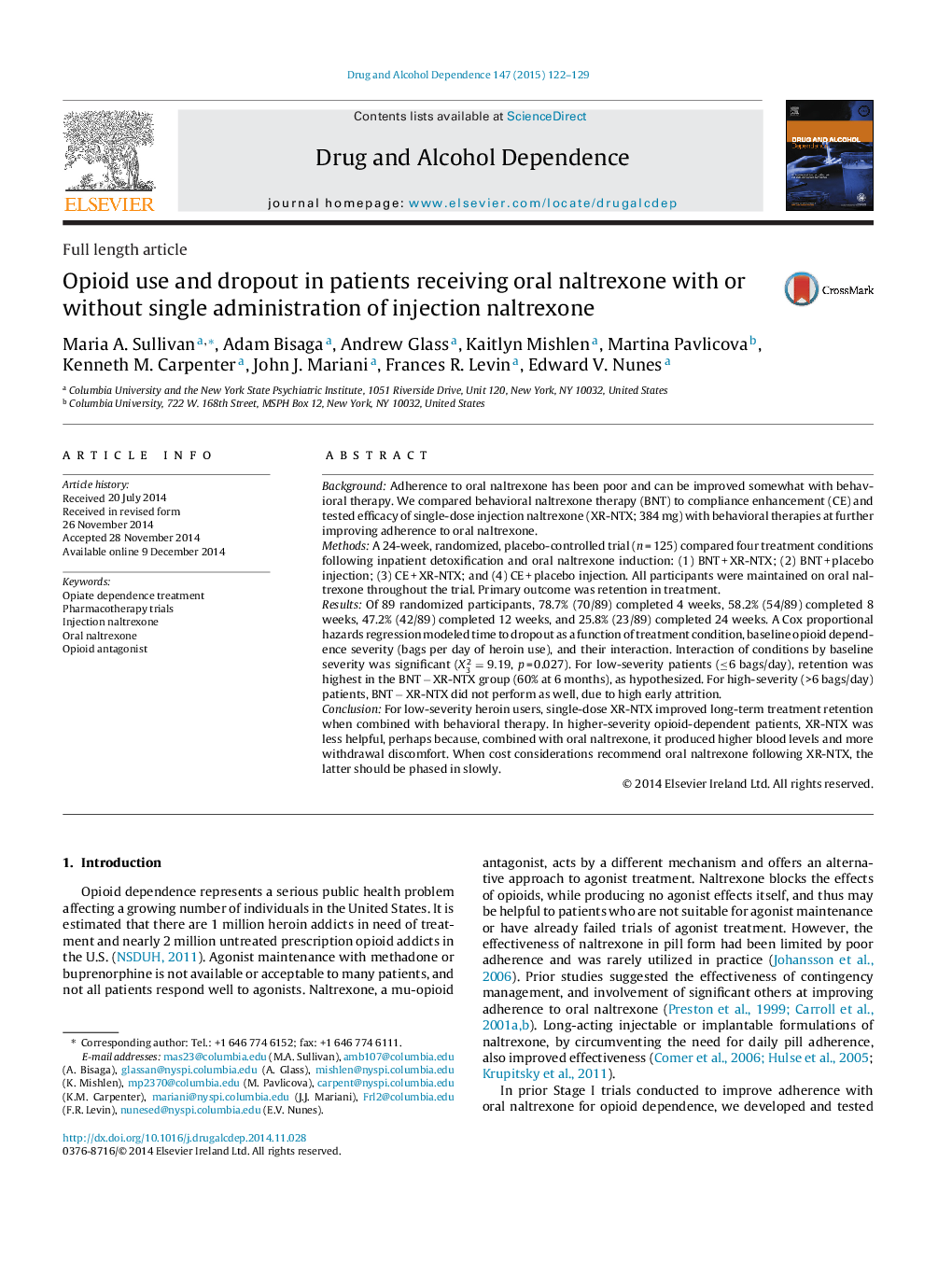| Article ID | Journal | Published Year | Pages | File Type |
|---|---|---|---|---|
| 1069880 | Drug and Alcohol Dependence | 2015 | 8 Pages |
•Low-severity opioid users achieved retention of 60% at 6 months in behavioral naltrexone therapy (BNT) + oral naltrexone with a single administration of injection naltrexone (XR-NTX).•High-severity opioid users experienced high early attrition in BNT-XR-NTX as a result of increased withdrawal discomfort from oral naltrexone combined with XR-NTX.•When patients are transitioned from XR-NTX, oral naltrexone should be phased in slowly.
BackgroundAdherence to oral naltrexone has been poor and can be improved somewhat with behavioral therapy. We compared behavioral naltrexone therapy (BNT) to compliance enhancement (CE) and tested efficacy of single-dose injection naltrexone (XR-NTX; 384 mg) with behavioral therapies at further improving adherence to oral naltrexone.MethodsA 24-week, randomized, placebo-controlled trial (n = 125) compared four treatment conditions following inpatient detoxification and oral naltrexone induction: (1) BNT + XR-NTX; (2) BNT + placebo injection; (3) CE + XR-NTX; and (4) CE + placebo injection. All participants were maintained on oral naltrexone throughout the trial. Primary outcome was retention in treatment.ResultsOf 89 randomized participants, 78.7% (70/89) completed 4 weeks, 58.2% (54/89) completed 8 weeks, 47.2% (42/89) completed 12 weeks, and 25.8% (23/89) completed 24 weeks. A Cox proportional hazards regression modeled time to dropout as a function of treatment condition, baseline opioid dependence severity (bags per day of heroin use), and their interaction. Interaction of conditions by baseline severity was significant (X32=9.19, p = 0.027). For low-severity patients (≤6 bags/day), retention was highest in the BNT − XR-NTX group (60% at 6 months), as hypothesized. For high-severity (>6 bags/day) patients, BNT − XR-NTX did not perform as well, due to high early attrition.ConclusionFor low-severity heroin users, single-dose XR-NTX improved long-term treatment retention when combined with behavioral therapy. In higher-severity opioid-dependent patients, XR-NTX was less helpful, perhaps because, combined with oral naltrexone, it produced higher blood levels and more withdrawal discomfort. When cost considerations recommend oral naltrexone following XR-NTX, the latter should be phased in slowly.
